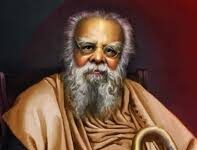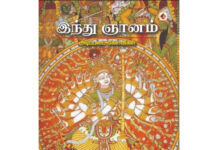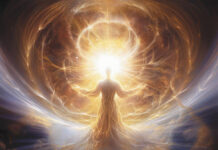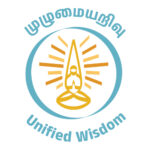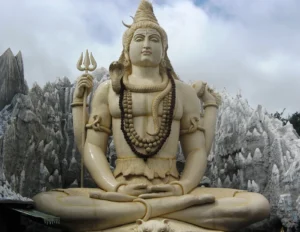
Religion and Dharma are distinctly different. As explained earlier, religion is unicentric with norms and has institutions that maintain and enforce them. Dharma is a thought tradition that slowly evolves from an archetype through the integration of many elements, branching off and growing apart. What was called Hindu Dharma earlier can be called as Hindu tradition today.
There were many ‘religions’ within the Hindu tradition. The scriptures say that Adi Shankara united all the six religions in the seventh century CE. This integration is called ‘Shanmad Samgragam’. Those six religions are Saivism, Vaishnavism, Saktham, Kaumaram, Ganapadyam and Sauram.
The worship of Shiva is Saivism. Vaishnavism is the worship of Lord Vishnu. Worshiping the goddess is Shaktham. Murugan worship is Kaumaram. The worship of the Sun is called Sauram.
It is a blunder to say that these six religions functioned autonomously in the sense that we call religion today. These are only different aspects within the same gnostic tradition (i.e. dharma). They were unique cults, with unique beliefs, but they belonged to the same Dharma.
There were debates between them. Those who strongly believed in one tradition did not accept another. But they were not completely different religions as we refer to the present day religions such as Hinduism, Christianity, and Islam. They are just different sects, that’s all. In that context, they were called religions. It is important to understand this difference. They should not be given the definition of a religion developed in Europe in the sixteenth century.
All six religions belong to the same tradition. All of them have almost the same form of worship. The mythological stories of the six religions are intertwined, and their deities are related inseparably. The philosophical foundations of these six religions, namely Atma, Brahman, Mukti, Pramanas and Gunas are common across all of them. The uniqueness of each of these religions is in their respective philosophical stances.
People practiced these six religions together. There is abundant literary evidence for this fact, dating back two millenia. It is evident when we see how Kalidasa, a worshiper of Kali, wrote Raghuvamsam in praise of Rama, and how Kamban, a priest from Uvachar clan of the Kali temple, sang Ramakatha. Even in Silapathikaram one can see Kovalan worshiping all the deities before leaving for Madurai.
Adisankara united the six religions on the philosophical plane. He used the motif of ‘Brahmam’ to achieve the unification. He explained that the ever unknown origin of the Universe and the deities of the six religions are forms and representations of ‘Brahmam’. This tradition turned into a monastic tradition called ‘Ekadhandi Sampradayam’. It was in this tradition that the Brahmin sect called ‘Smarthar’ arose who worshiped all the six religions.
So it is a very wrong idea that there were six separate modern-style religions. A Hindu who is aware of these basic details should never acknowledge that.
And if we go back in time, we can see that there are six visions (‘Darshans’). They are Sankyam, Yogam, Nyayam, Vaisheshikam, Purva Mimamsam and Uttara Mimamsam. None of these ‘Darshans’ have separate deities. They don’t have exclusive worship practices either. ‘Darshans’ are only six philosophical stances. They were also referred to as six religions in ancient texts.
Apart from these, there were many other religions. Many religions are mentioned in Manimegalai. Today, we cannot understand what they are. They are all philosophies and not religions in the modern sense.
Apart from these, there are many religions within each religion, such as Shaivism and Vaishnavism. Shaivas have twelve religions broadly categorized into two groups – ‘Aga Samayam’ and ‘Pura Samayam’. Padanavada Shaivism, Bedavada Shaivism, Sivasamavada Shaivism, Sivasangrindavada Shaivism, Esura Avikaravada Shaivism, and Sivatuvidha Shaivism are ‘Aga’ Shaiva sects. Pasupadham, Maviratam, Kabalikam, Vamam, Vairavam, and Aikyavadam are the six ‘Pura’ Saiva sects.
These twelve sects of Shaivism accept Shiva as the basis of Shaivism. But they differ in philosophy. (Shaivites refer sects like Jainism, Buddhism and Vaishnavism that do not accept Shiva as external religions outside of Shaivism.) Each of these Shaivite sects is called a religion by itself.
Similarly, Vaishnavism has four divisions, namely Sri Sampradayam created by Ramanuja, Madhva Sampradayam created by Madhwar, Rudra Sampradayam created by Vallabha and Kumara Sampradayam created by Nimparkar. They are also called separate religions. The books refer to them as Ramanuja religion and Madhva religion.
The Vedas are considered to be the ancient foundations of the Hindu tradition. There are those who accept the Vedas and those who reject them within the Hindu tradition. Acceptors are ‘Vaidhika’. Demurrers are ‘Avaidhika’. A sect of Shaivites and a sect of Vedantists do not accept the Vedas. Vedic tradition about Indra within the Vedas is called ‘Aindram’. The worship of the Sun is ‘Sauram’. Varuna is worshiped in the tradition called ‘Varunam’. Worshiping Agni is ‘Agneyam’. There are six like this. In Bharatiyar’s essays these are what he calls the ‘Six Religions’.
Hindu tradition or Hindu dharma, is only a general body of knowledge that encompasses many such aspects. Any tradition of wisdom flows like a river. Many tributaries join together to form a river. Similarly, a river divides into many tributaries. Kabini and Amaravati together become Kaveri. Vennar and Kollidam are separated from it. But everything is Kaveri.
Today we are being told that Shaivism is a separate religion and is not part of Hinduism. If we accept the argument ignorantly, very soon we may have to listen to someone say that Shaivism is not a religion, but the twelve sects of Shaivism are separate religions by themselves. He who says ‘I am a Shaivite and not a Hindu’ will after a while say ‘I am a Pathanavadi and not a Shaivite’. Would Shavites accept the argument then? When someone claims that Vaishnavism is a separate religion now and claims later that it is not but only its four sects are religions, would it be acceptable?
Shaivism is a part of Hindu tradition. Hindu tradition should be called dharma or tradition in the context of transmission of knowledge and should be interpreted as such. For the practice of law and implementation of practices, we can call it, Hindu Religion. No issues there. But while saying this, we should have the understanding that Hinduism is not a religion like Protestantism, but an intellectual tradition.
